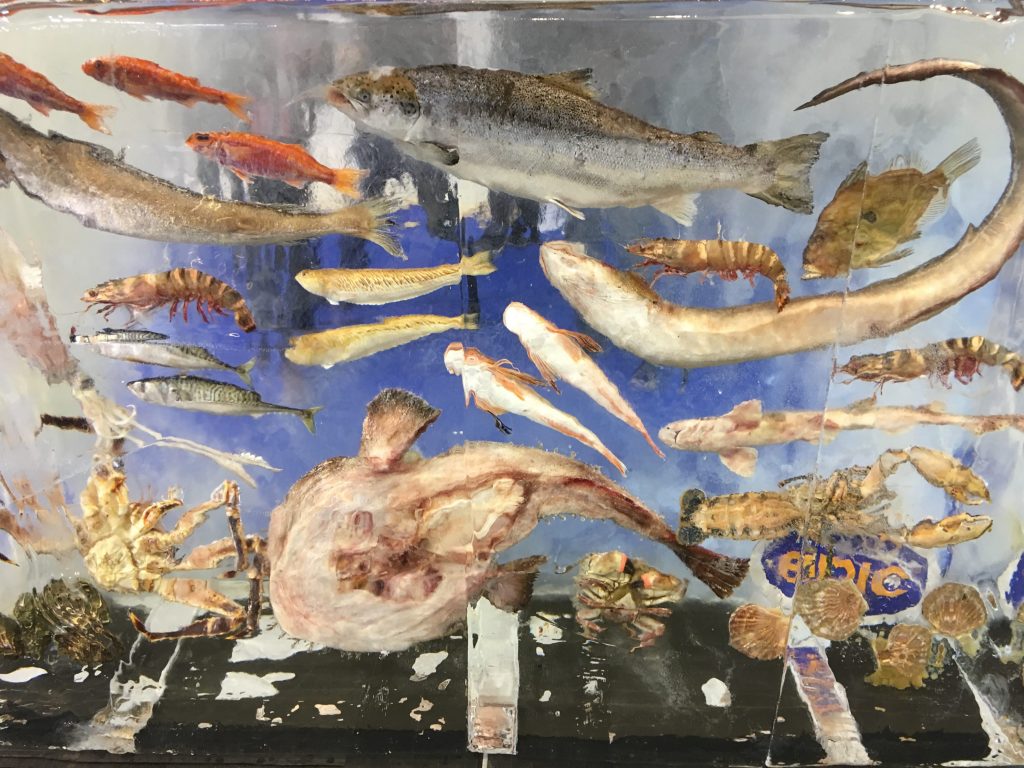
Implementing Full-Chain Traceability – Where Industry Can Start
Seafood passes through many hands during its journey to the end consumer. Once harvested – whether from open ocean or aquaculture – the journey is often complicated, sometimes spanning multiple countries. Traceability is essential to tracking critical information about seafood products as they pass through many points, and is becoming increasingly important to companies and consumers alike. Loss of traceability information can lead to a myriad of problems economically, socially, and environmentally. These potential issues can include illegal, unreported, and unregulated (IUU) fishing, seafood fraud, and a lack of fair and equitable working conditions.
Unfortunately, there is no one technological solution that addresses all of these risks. A combination of technologies is needed within and across supply chains to address many of these potential issues. For seafood industry actors that are unsure of where to begin, FishWise, Future of Fish, Global Food Traceability Center, and WWF have created a preliminary guide to get you started. Taking the First Steps Towards Full-Chain Seafood Traceability: A Preliminary Guide for Industry outlines three steps to take when considering how to initiate full-chain traceability: understanding what traceability entails internally and externally, assessing current traceability systems, and employing available expertise and resources in the field.

Step 1: Understand what traceability means
To recognize where to begin, it is first essential to understand what traceability entails both internally and externally. Internal traceability involves tracking product data within your own business, while external traceability calls for tracking the product’s path both up and down your supply chains. Full-chain traceability requires data collection and transfer from the point of capture through to the consumer, and needs to be externally accessible to trading partners within the supply chain. The components of traceability are distilled into five main functions outlined in this guide:
– Data collection, beginning with the harvest of the fish: This includes but is not limited to collection of product key data elements (KDEs) such as the species of fish, gear used, location of harvest, etc.
– Physical attachment of the product data to the product (via a barcode, QR code, etc.): New product data can be added to these codes at each step, which makes external traceability easier and prevents a loss of information throughout the supply chains
– Internal adoption of a one-up, one-down traceability method: One-up, one-down product tracking entails capturing the information of one trading partner below a company, and one trading partner above. In other words – where did your company obtain the product and then who do you pass it on to? This information is a critical start to implementing full-chain traceability, and is likely what a company already captures.
– Supply chain transparency at the facility or company level (such as location, basic methods used, updates on license legality, etc.): Commercial transparency allows for sharing necessary information among partners within supply chains, while still withholding more sensitive, proprietary information.
– Verification: Sufficient product data should be recorded and passed to each supply chain partner so that verification of that data is possible. Verification involves confirming a product was harvested and moved along the supply chain in the way that trading partners claimed it did. Essentially, this means that product data can be cross-checked using supply chain documents or by third-party auditors. Verification is essential to preventing mislabeling, fraud, and to support claims related to sustainability and legality.

Overall, internal and external traceability are critical components of an effective, full-chain, and verifiable traceability system.
Step 2: Review your company’s current practices and map your supply chains
Once the concept of traceability is understood, a company can gauge how to implement traceability best practices within its supply chains. Before beginning to think about what systems or combination of technologies to adopt, a self-assessment is essential for understanding the internal and external traceability capacity of any company, regardless of where it operates within the supply chain. To help assess with such a review, you can work through traceability capacity questionnaires such as the one included in this guide.
The decision to improve traceability practices within supply chains is contingent on cooperation across all participating companies, and is, thus, ultimately a supply chain decision. So, the first step for a company is to map its supply chains – within your company’s supply chains, who are the players that facilitate the harvest of the fish to the point of final sale? By assessing and mapping each actor within the supply chain, the capacity for external traceability can be better evaluated. For instance, is there the potential for data transfer electronically between each link in the supply chain?
Additionally, members should understand and agree on what product data is beneficial to share across the supply chain. Data deemed useful towards the end of the supply chain may not be collected at the beginning. That discrepancy can be due to a lack of articulation and agreement across all companies of what data should be collected and shared. Moreover, companies within the same supply chains may have to comply with a variety of regulations from differing governments. One effort aiming to address aligning data is the Global Dialogue on Seafood Traceability, which is an industry-led initiative aiming to create standardized KDEs, in the hopes of fostering interoperability and alleviating misalignment in data collection and sharing. The standards they are working to create are global and voluntary; to learn more about their work, visit their website here.
Step 3: Use existing resources
The guide concludes with offering the resources needed to equip industry in beginning this feat: an industry-specific traceability toolkit to assess where to begin and outlining potential returns on investment, instructive resources such as a compilation of existing KDE efforts to allow companies to align with current practices, and an educational course to walk companies through building their own traceability plan. Although multiple technologies may be essential to implementing robust traceability practices, only one online platform will be needed to learn about all of them. This is where the Seafood Alliance for Legality and Traceability (SALT) comes in.
SALT is a collaborative effort among the seafood community, working to promote helpful resources for implementing full-chain traceability in seafood supply chains by creating a one-stop online learning portal. SALT understands the fact that no ‘one tech fits all’ makes the process of implementing traceability quite daunting; however, through promoting conversation and collaboration among industry, NGOs, and government, SALT aims to make electronic catch documentation and traceability (eCDT) adoption accessible and flexible to the needs of industry. SALT serves as the hub to connect traceability projects and foster alliances, so that we can learn from one another to better our practices, remove existing barriers, and make the adoption of traceability easier.
Be a part of the conversation around the future of seafood traceability, and consider joining our Seafood Alliance for Legality and Traceability. To participate in SALT, please contact SALT@fishwise.org or check out the other resources on the site.
